by Dwight Furrow
 If there is one commonly held “truth” that governs conventional wisdom about wine tasting, it is that wine tasting is thoroughly subjective. We all have different preferences, unique wine tasting histories, and different sensory thresholds for detecting aromatic compounds. One person’s scintillating Burgundian Pinot Noir is another person’s thin, weedy plonk. But this “truth” is at best an oversimplification; like a very good Pinot Noir, matters are more complex.
If there is one commonly held “truth” that governs conventional wisdom about wine tasting, it is that wine tasting is thoroughly subjective. We all have different preferences, unique wine tasting histories, and different sensory thresholds for detecting aromatic compounds. One person’s scintillating Burgundian Pinot Noir is another person’s thin, weedy plonk. But this “truth” is at best an oversimplification; like a very good Pinot Noir, matters are more complex.
Wine tasting occupies a curious, liminal space in the architecture of human experience. It is sensual yet intellectual, visceral yet highly codified, personal yet somewhat anxiously public. It is therefore persistently haunted by the question of whether it can legitimately aspire to objectivity or is it hopelessly mired in personal preference and cultural contingency.
Most discussions of this topic settle into the familiar but facile polarity between the subjectivists, who proclaim that all tasting is little more than the projection of our private whims onto liquid canvases, and the objectivists, who dream of a science of wine, a rigorous catalog of chemical facts from which flavor profiles might be derived like astronomical coordinates. Both camps miss what makes wine worth talking about in the first place: the irreducible relational character of taste.
The notion of objectivity, as it was forged in the smithy of modern science, is a curious thing. It assumes the world is composed only of discrete entities endowed with properties that exist independently of how they are observed. This account of objectivity works reasonably well when applied to the movement of planets or an analysis of the chemical constituents of wine but falters with phenomena whose existence depends on being perceived. The taste or smell of a wine is not given in isolation but unfolds as an interplay between the liquid, our sensory mechanisms, and the mind. Read more »

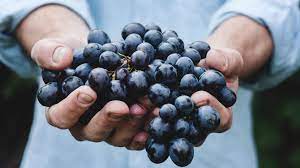 Theories that specify which properties are essential for an object to be a work of art are perilous. The nature of art is a moving target and its social function changes over time. But if we’re trying to capture what art has become over the past 150 years within the art institutions of Europe and the United States, we must make room for the central role of creativity and originality. Objects worthy of the honorific “art” are distinct from objects unsuccessfully aspiring to be art by the degree of creativity or originality on display. (I am understanding “art” as a normative concept here.)
Theories that specify which properties are essential for an object to be a work of art are perilous. The nature of art is a moving target and its social function changes over time. But if we’re trying to capture what art has become over the past 150 years within the art institutions of Europe and the United States, we must make room for the central role of creativity and originality. Objects worthy of the honorific “art” are distinct from objects unsuccessfully aspiring to be art by the degree of creativity or originality on display. (I am understanding “art” as a normative concept here.)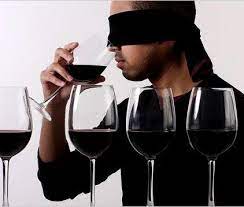 It seems as if everyone in the wine industry proclaims that wine tasting is subjective. Wine educators encourage consumers to trust their own palates. “There is no right or wrong when tasting wine,” I heard a salesperson say recently. “Don’t put much stock in what the critics say,” said a prominent winemaker to a large audience when discussing the aromas to be found in a wine. The point is endlessly promoted by wine writers. Wine tasting is wholly subjective. There is no right answer to what a wine tastes like and no standards of correctness for judging wine quality.
It seems as if everyone in the wine industry proclaims that wine tasting is subjective. Wine educators encourage consumers to trust their own palates. “There is no right or wrong when tasting wine,” I heard a salesperson say recently. “Don’t put much stock in what the critics say,” said a prominent winemaker to a large audience when discussing the aromas to be found in a wine. The point is endlessly promoted by wine writers. Wine tasting is wholly subjective. There is no right answer to what a wine tastes like and no standards of correctness for judging wine quality.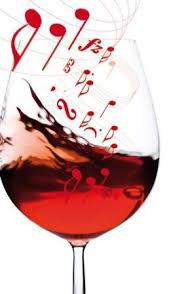 The evidence that pairing music with wine can enhance one’s tasting experience continues to mount since
The evidence that pairing music with wine can enhance one’s tasting experience continues to mount since 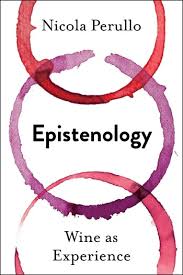 Epistenology: Wine as Experience
Epistenology: Wine as Experience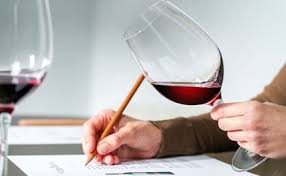 Last month
Last month  In giving an account of the aesthetic value of wine, the most important factor to keep in mind is that wine is an everyday affair. It is consumed by people in the course of their daily lives, and wine’s peculiar value and allure is that it infuses everyday life with an aura of mystery and consummate beauty. Wine is a “useless” passion that has a mysterious ability to gather people and create community. It serves no other purpose than to command us to slow down, take time, focus on the moment, and recognize that some things in life have intrinsic value. But it does so in situ where we live and play. Wine transforms the commonplace, providing a glimpse of the sacred in the profane. Wine’s appeal must be understood within that frame.
In giving an account of the aesthetic value of wine, the most important factor to keep in mind is that wine is an everyday affair. It is consumed by people in the course of their daily lives, and wine’s peculiar value and allure is that it infuses everyday life with an aura of mystery and consummate beauty. Wine is a “useless” passion that has a mysterious ability to gather people and create community. It serves no other purpose than to command us to slow down, take time, focus on the moment, and recognize that some things in life have intrinsic value. But it does so in situ where we live and play. Wine transforms the commonplace, providing a glimpse of the sacred in the profane. Wine’s appeal must be understood within that frame.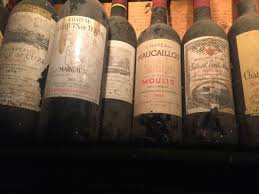 From its origins in Eurasia some 8,000 years ago, wine has spread to become a staple at dinner tables throughout the world. Yet wine is more than just a beverage. People devote a lifetime to its study, spend fortunes tracking down rare bottles, and give up respectable, lucrative careers to spend their days on a tractor or hosing out barrels, while incurring the risk of making a product utterly dependent on the uncertainties of nature. For them, wine is an object of love.
From its origins in Eurasia some 8,000 years ago, wine has spread to become a staple at dinner tables throughout the world. Yet wine is more than just a beverage. People devote a lifetime to its study, spend fortunes tracking down rare bottles, and give up respectable, lucrative careers to spend their days on a tractor or hosing out barrels, while incurring the risk of making a product utterly dependent on the uncertainties of nature. For them, wine is an object of love. Although wine writing takes diverse forms, wine evaluation is a persistent theme of much wine writing. When particular wines, wineries or vintages are under discussion, at some point the writer will typically turn to assessing wine quality. The major publications devoted to wine include tasting notes that not only describe a wine but indicate its quality, often with the help of a numerical score, and most wine blogs and online wine magazines include a wine evaluation component that is central to their mission.
Although wine writing takes diverse forms, wine evaluation is a persistent theme of much wine writing. When particular wines, wineries or vintages are under discussion, at some point the writer will typically turn to assessing wine quality. The major publications devoted to wine include tasting notes that not only describe a wine but indicate its quality, often with the help of a numerical score, and most wine blogs and online wine magazines include a wine evaluation component that is central to their mission. If by “objectivity” we mean “wholly lacking personal biases”, in wine tasting, this idea can be ruled out. There are too many individual differences among wine tasters, regardless of how much expertise they have acquired, to aspire to this kind of objectivity. But traditional aesthetics has employed a related concept which does seem attainable—an attitude of disinterestedness, which provides much of what we want from objectivity. We can’t eliminate differences among tasters that arise from biology or life history, but we can minimize the influence of personal motives and desires that might distort the tasting experience.
If by “objectivity” we mean “wholly lacking personal biases”, in wine tasting, this idea can be ruled out. There are too many individual differences among wine tasters, regardless of how much expertise they have acquired, to aspire to this kind of objectivity. But traditional aesthetics has employed a related concept which does seem attainable—an attitude of disinterestedness, which provides much of what we want from objectivity. We can’t eliminate differences among tasters that arise from biology or life history, but we can minimize the influence of personal motives and desires that might distort the tasting experience.